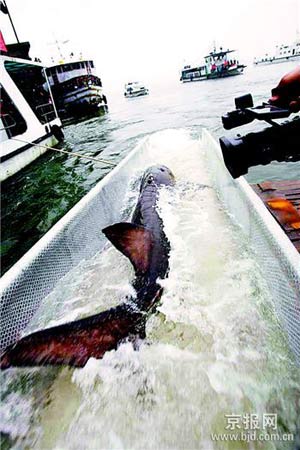| Home / Environment / News | Tools: Save | Print | E-mail | Most Read |
| 400,000 Rare Fish to Replenish Yangtze River Stocks |
| Adjust font size: |
Around 110,000 Chinese sturgeon were among more than 400,000 rare fish released into the
The fish, released at 11 sites in nine cities, included 280,000 mullet, which was listed with the sturgeon as a protected species, said Zhang Xianliang, director of the Yangtze River Fisheries Research Institute. More than 7 million sturgeon have been released into the Yangtze since 1983, but Zhang said this was the first occasion in which such a large number of rare fish had been released into the river at one time. Zhang said conditions were appropriate for the release with the water temperature at 10 to 16 degrees Celsius and the Yangtze currently under a fishing ban. Decreasing river levels and pollution have taken their toll on fish stocks. The number of sturgeon that migrate to the Yangtze each year to spawn has dropped from Chen said the number of sturgeon in the Yangtze was unknown, but it was at least 500. To boost fishery sources, But many sturgeon released in the 1980s and 1990s died as breeding techniques were not as effective as those at present, Chen said, adding they have worked to improve techniques and increase their survival chances.
In Li said the sturgeon usually stayed in deep water, where they could better avoid the dangers of the river such as large boats and fishermen. Two wild Chinese sturgeon, about three meters long, one weighing They had been in the Beijing Oceanarium for the last two years after being injured in the Yichang section of the Yangtze River in Liu said they had marked all the sturgeon and planted sonar devices and chips in some to follow their progress. "If they cannot adapt, we will get them back into the institute for recuperation," Liu said. The Chinese sturgeon is one of the oldest vertebrates in the world and has existed for more than 200 million years. (Xinhua News Agency April 23, 2007) |
| Tools: Save | Print | E-mail | Most Read |
 |
| Related Stories |
|
|||
